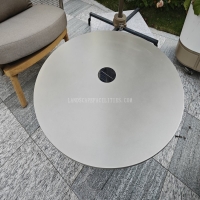Welcome to the website for landscape facilities products and knowledge.
How do manufacturers ensure that landscape chairs are resistant to damage from ice melt products?
Manufacturers employ several strategies to ensure landscape chairs withstand damage from ice melt products, which are commonly used in winter to de-ice walkways and patios.
1. Material Selection: High-quality materials like powder-coated aluminum, marine-grade polymer, or rust-resistant steel are chosen for their durability and resistance to corrosive chemicals found in ice melt products. These materials prevent rust, cracking, and discoloration.
2. Protective Coatings: Many landscape chairs feature specialized coatings, such as epoxy or polyurethane finishes, which create a barrier against salt and chemical exposure. These coatings enhance longevity by preventing surface degradation.
3. Design Considerations: Elevated legs or reinforced frames reduce direct contact with ice melt residues, minimizing corrosion risks. Additionally, drainage-friendly designs prevent water and chemical pooling.
4. Testing & Certification: Reputable manufacturers subject chairs to accelerated weathering tests, simulating long-term exposure to ice melt chemicals. Certifications like ANSI/BIFMA ensure compliance with durability standards.
5. Maintenance Guidelines: Manufacturers often provide care instructions, recommending rinsing chairs after winter to remove chemical residues, further extending their lifespan.
By combining robust materials, smart engineering, and proactive maintenance, manufacturers ensure landscape chairs remain functional and attractive despite harsh winter conditions.
Related search:

Recommendation
Outdoor stainless steel table with solar-powered ambient lighting feature - excellent design.